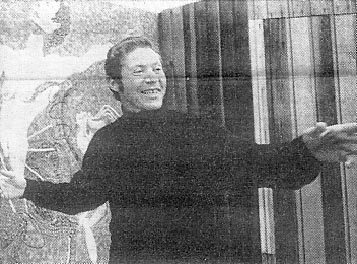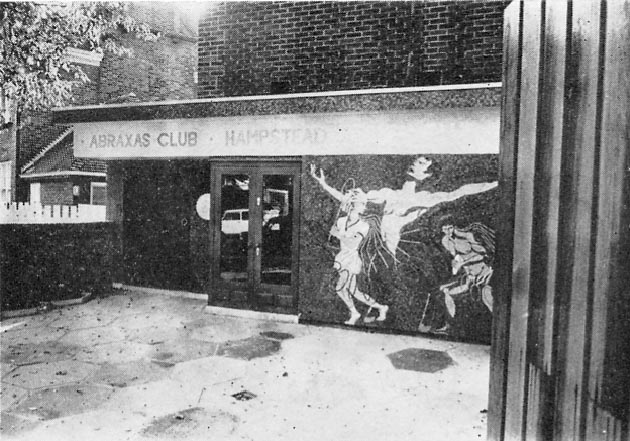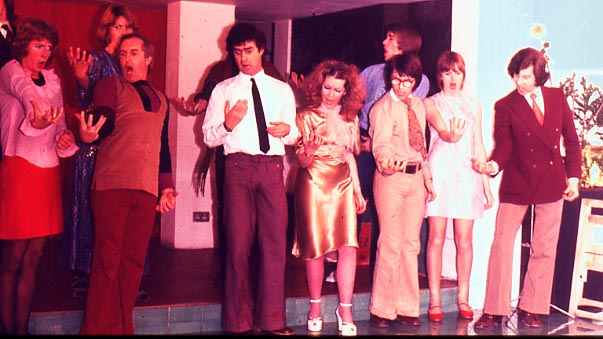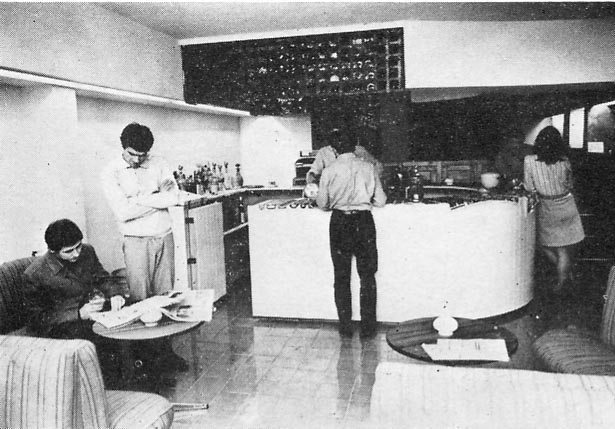"One
way to health"
by
Peter Halstead
Several
excerpts from his article in the “Hampstead Express”
"A
much more than human voice began to warble; now throaty, now from
the head, now hollow as a flute, now charged with yearning harmonics,
it effortlessly passed from Gaspard Forster's low record on the very
frontiers of musical tone to a trilled bat-note high above the highest
C to which (in 1770, at the Ducal Opera of Parma, and to the astonishment
of Mozart) Lucrezia Agujari, alone of all the singers in history,
once piercingly gave utterance."
................When Alfred Wolfsohn
read this description of the Utopian voice in "Brave New World",
he wrote to Aldous Huxley: "Your vision has been realised in
my work."
...............It was no idle boast.
Wolfsohn, a voice psychotherapist, who was living and working in The
Ridgeway, Golders Green, at the time of his death six years ago, found
that by concentrating on the part played by different areas of the
body, and by different attitudes of mind and imagination in influencing
the production of sounds, he was able to develop a method of release
for powerful latent energies in the human system"

Roy
Hart at the opening ceremony of the "Abraxas Club"
..........."He
treated the voice as the natural focus of expression for a wide range
of unconscious impulses and eventually produced an 11-year-old boy pupil
whose voice was capable of covering nine octaves. The average human voice
has a range of up to 2.5 octaves."
"Yma Sumac,
"the Peruvian nightingale,'' has a range of just over three octaves
and is regarded as a freak of nature. Yet when the International Journal
of Phoniatry published the findings of a detailed scientific examination
into the voice of Jenny Johnson, another Wolfsohn pupil, whose singing voice
covered 4.5 octaves, it was found that her larynx was the same as almost
everyone else's, and was unstrained.
................Music critic Lionel Salter
heard her sing in the mid-1950s and wrote: "She had to be heard and
even then couldn't be believed."
...............Some seven or eight years earlier,
Wolfsohn had attracted the interest of Roy Hart, a young South African on
a scholarship to the Royal Academy of Dramatic Art, who became his close
disciple and colleague.
................When Wolfsohn died he bequeathed
his inspiration to Hart, his natural successor. Now Hart presides over what
he calls a "combined Church/Theatre/Gymnasium/Clinic" at the Abraxas
Club.
...............He told me: "While at RADA
I had known for some time that my voice was not rooted, not literally embodied,
that the various roles I had to perform so well were actually only figments
of my imagination with no connection with my body.
..............."When
I left RADA I was offered a very promising opening in the theatre, but I
turned it down. I can now see that this choice was governed by an inescapable
bias. The human species has always kept a precarious balance between the
instinct to consolidate the status quo and the instinct to break barriers
to extend the fields of awareness.
.............."We who meet at the Abraxas
are birds of a feather who form an avant garde group. When the status quo
shows serious cracks, discerning minds gather to study current trends seeking
to interpret some message for future consolidation. Those who read the signs
correctly and act on them are quietly making history. I acted on such a
sign when I met Alfred Wolfsohn.
................"I was introduced to his
studies and became concerned with the relationship between voice and personality,
especially as this manifested itself in a spectrum of energy production
varying from apathy to intensity.
............../"Most people I met, even
many professional athletes, were unrelated to their bodies: the voice was
a key to the insights I sought after, insights into an integrated mind-body
relationship in the individual, whatever his profession.
................"Singing, as we practise
it, is literally the resurrection or redemption of the body. The capacity
to "hold" the voice in identification with the body makes biological
reality of the concept 'I am.' The ability to hold fast with the whole body
in vocal production can, with correct training, develop an ability to hold
fast in complex situations.
................"Concentration is a summoning
of the whole body in one effort. True concentration is prayer. So it is
not surprising that the mental and physical demands of our work caused our
meeting place gradually to be regarded as a combined Church-Theatre-Gymnasium-Clinic—a
place where the energy of body and mind unite in an effort to live more
consciously, through the medium of creative art.
................"The Abraxas Club, with
all its health-promoting facilities, was an expansion of our philosophical
work, though not everyone joining the club will be interested in our particular
philosophy."
.................Hart played me an unedited
tape of himself exploring the eight octave range—sometimes using four
different strands of sound simultaneously—to demonstrate "the
biological education of the personality through the voice."
.................The sound leapt aeons ahead
of Schoenberg's "Sprechtimme" into realms far beyond the limits
of emotional expression, as it is encountered in life as most of us are
used to living it.
.................I
am not the first person to find conventional language inadequate to express
the physical and mental impact these human sounds are capable of making
on the listener. Arthur Koestler once heard them at a private demonstration
in London and exclaimed: “This is black magic!”
................Perhaps Aldous Huxley's comment
is the most lucid and provocative. He wrote to Wolfsohn: "Your experience
with the training of the voice serves to deepen a conviction which has been
steadily forming in my mind during recent years, namely that the supposed
physiological or psychological limits to the human being's achievements
in every field of activity do not lie where they have been (arbitrarily
and on inadequate evidence) placed, but are capable of very great extension,
if and when certain conditions of mind-body training are fulfilled.
..............."My own experiences with,
and observation of, the process of visual education, as developed by Dr.
W. H. Bates and his followers, have shown very clearly that seeing can be
enormously improved by suitable methods (fundamentally psychological in
nature), in spite of the fact that the organ, according to orthodox ophthalmologists,
is physically incapable of seeing any better.
...............Recently I have had some experience
of, and second-hand acquaintance with, the work of Dr. Samuel Renshaw, the
distinguished Gestalt psychologist who teaches at the University of Ohio.
..............."Using
the tachtystoscope (a flashing magic lantern, which projects images for
periods ranging from a tenth to a 2,000th of a second) Renshaw has trained
many persons to perform feats of seeing normally regarded as completely
impossible.""
"Huxley
also wrote of a book by the German psychologist, Eugen Herrigel, "Zen
and the Art of Archery", describing a Japanese technique
which "enable utterly incredible feats of skill to be performed, beyond
all the ordinarily accepted limits of possibility."
............He added: "In all these cases,
the principle employed appears to be the same—the principle that maximum
proficiency is achieved when activity is combined with relaxation: relaxation
of the surface will and the conscious ego, leaving the way clear for activity
by the Entelechy, the Vegetative Soul or, on a yet deeper level, the Atman-Brahman."
...........I watched Hart's pupils—they
can all effortlessly break the 2.5 octave barrier, and insist that you and
I can too—in a rehearsal of "the Bacchae" of Euripides.
...........A force generated by the group's
total personality and body release into all the psychological nuances of
the original text broke another barrier - the actor-audience barrier. Not
surprisingly, Peter Brook is one of the group's most ardent admirers.
............The actors make full use of the
unique dramatic instrument of the multi octave voice and sound man’s
hermaphroditic depths by using both male and female pitches and doubling
up on opposite gender roles.
............My own words surprise me, but at
one point, assailed by the widest imaginable range of emotive noises, I
imagined I heard that Wolfsohn called the Voice of the Future, and through
which—to use Hart's words—"a bold yet helpless creature
tries to outdo the dangerous siren-voice of the Void."
............Hart, like his "guru"
Wolfsohn, is not a mystic in the ordinary sense of the word. I was reminded
rather of Einstein, whom Wolfsohn was fond of quoting: "The cosmic
religious experience is the strongest and most noble fountain of science.""
Roy
had for many years referred to himself as “a bridge builder”.
I can testify that was true. Not only did he have a capacity to create
relationships between unlikely people but he was also a bridge maker
between incompatible concepts. This was one of Roy’s many gifts
as a leader of his theatre. It was never to be found in any of his
students that followed him.
;;;;;;;;;;;It was only after Roy’s
death in 1975 that the great differences that existed between many
of the members in his theatre began to make themselves felt. Even
so, when one of our members declared in 1976 that “we were all
reverting back to type” this comment was not very well received
by the theatre. In the event, it was certainly rather anticipatory.
Many of us at that time had worked with Roy for ten or more years,
therefore it was unlikely that in under ten months the result of all
this training was going to dissipate so fast.
;;;;;;;;;;;In the thirty years that have
followed Roy’s death these differences have continued to cause
occasional frictions between us. But at no time have our capacities
to communicate with each other totally failed. Now, in the last five
years starting in October 2005, these ever increasing distances between
us have been getting bigger at an alarming rate. Finally in this year
of 2010, there has been total collapse of relationships between members.
I fear that this division will never be reversed. Sadly this event
does mark the end of Roy Hart’s theatre, certainly the end of
his “Abraxian” influence over us perhaps not affecting
his work but definitely his theatre.



